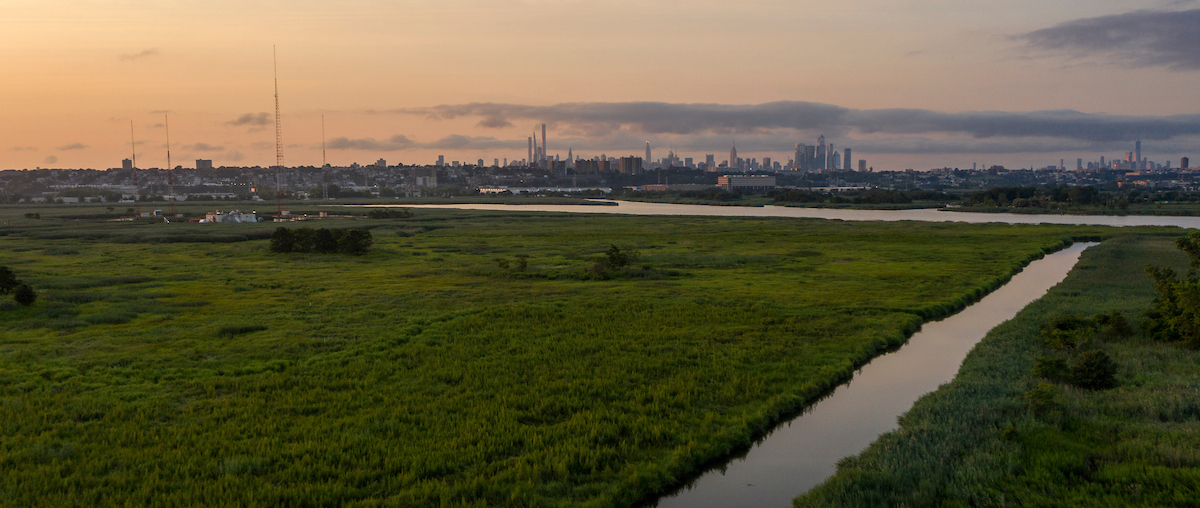
The New York Jets and the New York Giants play at nearby Metlife Stadium but eagles and ospreys fly nearby in a marsh protected for two decades by Williams.
A 260-acre preserve near our Station 240 operations is now a thriving habitat for bird, fish and native plant life.
“We had our first successful bald eagle nest here last year, along with osprey nesting all around,” said Tom Shinskey, an environmental scientist with WSP, which partnered with Williams on the restoration. “It’s just an amazing oasis. A nice peaceful marsh surrounded by urban area.”
At Station 240 in New Jersey, the vista includes both the New York City skyline and pristine habitat fed by tidal waters.
Williams has been caretaker of these wetlands for more than 20 years and has transformed it from a trash-filled swamp to a refuge for wildlife surrounded by bustling urban development.
It wasn’t always so beautiful. When Williams bought the property more than two decades ago, it was filled with rotting tires and invasive plant life that choked tides and drove away native species.
Prior to restoration, the property was full of invasive reeds called Phragmites, said Shinskey. “We removed them so the marsh would fully flood with each tide and excavated channels to further enhance the flow and support a variety of native herbaceous and woody species.”
Shannon Turek, a senior environmental specialist for Williams said the company is committed to safeguarding biodiversity and to responsibly managing critical natural resources like these wetlands.
“I make sure the wetlands are still wet, the banks are still stable, all the plantings are growing,” she said. “I’m proud to work for a company that prioritizes environmental stewardship.”
